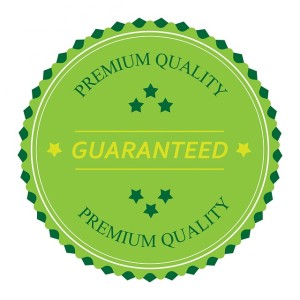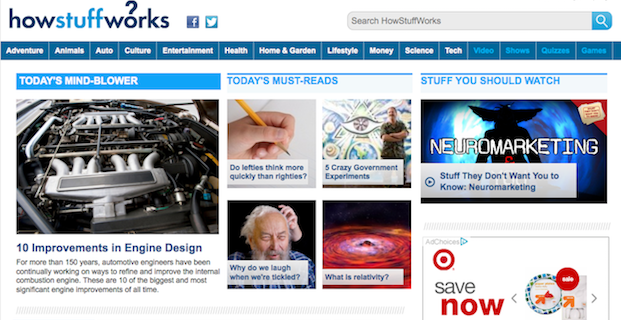by Elle Ray | May 13, 2014 | Small Business Advice
We All Resist Doing What We Know We Should
We know we should exercise more, eat less, get more sleep, relax more often, play with the kids and take more vacations. As small business owners, we know we should clean our tools, make more cold calls, update our marketing brochure and write a weekly blog. But too often we just don’t do what we “should” do.

Procrastination, that devil of idleness, can lead to a whole host of issues. Never mind the weight gain and lost business opportunities. Forget the bags under your eyes and the slipping of your website ranking. Those are just the consequences. How about all that guilt and the negative messages we send ourselves about how we’re failing? Face it, no good comes of procrastinating on doing things that are good for us.
And yet at the same time, no good comes from the “shoulds.” Here are our tips for overcoming the dreaded “shoulds:”
Stop Talking
Stop the endless chatter about what you have to do and follow the old Nike saying: “just do it.” Too often, says author and sociologist Martha Beck, we kid ourselves into thinking we are making progress when all we’re really doing is adding more verbiage to our stories and our “shoulds.” We discuss, plan and talk about the issues in meeting after meeting, but we end up with the same results at the end of the day: nothing done and going home with more remorse to keep us tossing through the night.
Get Real
It takes a lot of courage to face the truth. Whether you’re afraid of failing, not sure how to move forward or just plain not interested in those things hanging out on your “should” plate, there’s a reason that you’re not getting the important stuff done. Instead of trying to force results, take a step back and figure out what is standing in your way and work on removing that obstacle. Take a class, delegate, accept the status quo or change directions. Get counseling if necessary, if that’s what it takes to get real. Do something to drop the sack of rocks in your “should” bag, and you’ll sleep like a baby.
Find Help
Business owners in general believe they are strong, confident and capable. Without those characteristics, they’d be working in a cubicle collecting a safe paycheck every week. But oftentimes, it’s those very same independent streaks that keep them stuck and full of “shoulds.”
It’s the really strong, confident leader who admits to not having all the answers. It’s the smart entrepreneur who asks for help. Join a support group, hire extra help or just read a helpful blog. Chances are that someone else has felt the same way as you do and carried similar fears and doubts to bed each night. The odds are pretty good that someone else has found solutions they are willing to share. All you have to do is ask.
Like us.
Ray Access is a content marketing firm that delivers targeted words to empower your business. Contact us about your specific project to receive a quote or discuss your needs. We write website copy, blog posts, e-newsletters and more. Everything we do is thoroughly researched, professionally edited and guaranteed original.
by Mark Bloom | May 5, 2014 | Website Content
Your Website Content Makes a Big Difference

More and more of our clients have been asking for website content. There’s good reason to upgrade your website content, especially if your website isn’t working for you. Our two unofficial mottos are:
- If your website isn’t making you money, it’s costing you money.
- If you’re ignoring your website, it’s likely ignoring you.
These aren’t just clever phrases; they underline our business philosophy that every website is a potential marketing engine. If you aren’t optimizing your website for your company, you’re losing ground to your competition. The trends are clear: the Internet is the new yellow pages. If your listing doesn’t appear, you are losing business.
First Step: Fresh Content
The first thing we do for our clients is to update their websites to make sure the content addresses their target audience: their existing and potential customers. It has to welcome visitors, introduce a business and answer their questions.
We often recommend an active blog, because business blogging is an excellent way to attract new customers and answer more questions in a more in-depth manner. That makes the website more useful, and useful content online often is shared. If your visitors are sharing your content, that’s better than advertising.
Landing Pages Work
 The next logical step, once the website content is working to attract new visitors, is to turn those visitors into customers. That’s the goal of landing pages.
The next logical step, once the website content is working to attract new visitors, is to turn those visitors into customers. That’s the goal of landing pages.
A landing page is a special page constructed on your website that you direct people to when you want them to learn more about your products or services. The classic example of a landing page is the website page where you send web users who click on your ad somewhere else (e.g., on a social media site). By clicking the ad, they have already demonstrated interest in your company, so you want them to land on a useful, informative and active page.
In this case, your landing page must explain your competitive advantage. You have to sell your company. You have to persuade the visitor to buy your products or services. Normally, your website should not be an avenue to push your products or services onto your visitors. That drives people away. But a landing page is different. On the landing page, you want to give them options and a way to contact you or make a purchase.
Put Theory into Practice
Now that you understand how your website is supposed to operate to generate business and convert visitors into customers, get to it! Contact us for a website assessment, and we’ll give you our honest, objective feedback regarding your website’s effectiveness, whether you hire us or not. What have you got to lose, except inertia?
Ray Access is a content marketing firm that delivers targeted words to empower your business. Contact us about your specific project to receive a quote or discuss your needs. We write website copy, blog posts, e-newsletters and more. Everything we do is thoroughly researched, professionally edited and guaranteed original.
by Elle Ray | Apr 25, 2014 | Small Business Advice
Has Your Blog Made Your Newsletter Irrelevant?

Image courtesy of Andy Newson / FreeDigitalPhotos.net
In the past, newsletters were a useful tool for communicating information to your customers and stakeholders about your organization. They tended to be lengthy, full of notices, updates, a couple of decent articles and maybe even a few ads for your products or services. Newsletters typically were sent via normal mail as well as email.
With the advent and mainstream popularity of blogs, however, the newsletter of old may in fact be obsolete and a waste of time, effort, information and resources. Considering the amount of time consumers read marketing collateral material, you may actually get more bang for your buck by circulating your blogs instead of trying to craft an in-depth quarterly newsletter.
Newsletters vs. Blogs
- You can use a blog post in ways that you never could with a newsletter. For example, you can post it on your social media sites, send it to your email lists, use it as a guest blog on other industry sites and shorten it for mobile communications.
- Instead of sending out a newsletter, send your blog to your email list instead. Your existing and prospective clients will appreciate the targeted brevity of your information, and you’ll benefit by putting your company name in front of their eyes.
- When you send a newsletter by email, you often have to attach a PDF file, which is the electronic format of the newsletter. Many of your customers, however, may not bother to even open the attachment. You can solve this problem by putting your blog post in the body of the email instead.
- Keep blog topics straight and simple. With a weekly blog, you can touch on one subject at a time. In a newsletter, important information can get lost among the multiple stories and topics.
- A newsletter doesn’t help your website page rank. Posting fresh content every week on your website through your blog posts pleases the search engines and gradually raises your page rank.
- Single-topic blog posts can reinforce some keywords or add others, giving your website added strength when it comes to attracting new visitors. Newsletters can’t do that.
- If your company does decide to do both a blog and a newsletter, each must include different information.
Blogs Are Better
According to Penn State University, a blog is a much more reader-friendly communication tool than a newsletter. A blog has more uses and is more likely to be read than a newsletter with multiple articles. But you don’t have to give up on your regular quarterly communications; just break it up into blog posts and put them on your website. The benefits are obvious.
Smarter Newsletters
If some of your clients still prefer to get a hard copy they can hold in their hands, you don’t have to get rid of your newsletter. Just be smarter about how you spend your writing and formatting time. First, ask your customers to opt in for a printed version to cut down on postage for your snail-mailing list. Then put together four or five of your best blog posts into a newsletter format and print it out for them. It’s a win-win situation.
At Ray Access, we’ll gladly share more about our experiences with online blogging — and even do it for you if you’re too busy. We also can pull together content for your newsletter customers and give you crisp new copy on a regular basis for all your followers.
Ray Access is a content marketing firm that delivers targeted words to empower your business. Contact us about your specific project to receive a quote or discuss your needs. We write website copy, blog posts, e-newsletters and more. Everything we do is thoroughly researched, professionally edited and guaranteed original.
by Mark Bloom | Apr 15, 2014 | Website Content
Content Marketing Effectively Converts Leads
Here in Asheville, North Carolina, we talk about content marketing a lot. Content marketing is, in essence, turning your website into a marketing engine by supplying useful information that attracts an audience. It works, and we have documented proof. We’ve also written about quality content before.
But it’s more than that. In case you’ve missed it, the Internet is replacing the Yellow Pages as the primary way consumers are looking for your products or services. It’s a sign of the times, just like other things that have disappeared, like rotary telephones, landlines and typewriters. So if you are ignoring your website, as our motto says, your website is ignoring you. That’s not a smart business decision.

So whether you hire us or not, we urge you to adopt content marketing strategies. But even if you are doing everything you can to put content marketing to work on your business website, the next question is: Will just doing this simple thing actually convert the visitors you attract to your website into paying customers?
Content Marketing Is User-Centric
 The answer, of course, is yes. Content marketing, if properly done, can persuade your website visitors to become clients. Content marketing employs a user-centric approach, to use a term from the 1990s. “User-centric” means that you design your website with your visitors in mind. Make their experience everything they could hope for, and they’ll reward you with their business.
The answer, of course, is yes. Content marketing, if properly done, can persuade your website visitors to become clients. Content marketing employs a user-centric approach, to use a term from the 1990s. “User-centric” means that you design your website with your visitors in mind. Make their experience everything they could hope for, and they’ll reward you with their business.
You must make your website easy to navigate. Make your content easy to understand. Answer your visitors’ obvious questions and provide your contact information on every page. Provide helpful tips and advice about your industry, products or services. To sum up: make your website valuable to your community of users. “User-centric.”
When Your Customers Have Landed

Even if you do all this and your website is attracting a lot of traffic, you still must sell your company’s products or services. Knowing where and when and how to do this is a science, but it’s not rocket science. One tip is to construct effective “landing pages.”
A landing page is where visitors interested in a specific topic, product or service arrive on your website through a search engine or internal link. Landing pages must answer the questions about specific topics and effectively explain how your company can solve the associated problems. It’s not a pushy sales page. It’s not an advertisement. It’s a question-and-answer session, where your company has the best answer.
Content Marketing Has a Positive ROI
 A landing page can be a blog post or a website page. It doesn’t matter, as long as it satisfies the above criteria. In fact, this very blog post can act as both an informative article and a landing page, since it targets businesses that need to learn about converting website visitors or creating better content on their websites — since Ray Access can do this for you, at a reasonable cost and with a proven return on investment (ROI).
A landing page can be a blog post or a website page. It doesn’t matter, as long as it satisfies the above criteria. In fact, this very blog post can act as both an informative article and a landing page, since it targets businesses that need to learn about converting website visitors or creating better content on their websites — since Ray Access can do this for you, at a reasonable cost and with a proven return on investment (ROI).
Get a free estimate. We also offer a website analysis service that can provide an objective assessment of your website.
Ray Access is a content marketing firm that delivers targeted words to empower your business. Contact us about your specific project to receive a quote or discuss your needs. We write website copy, blog posts, e-newsletters and more. Everything we do is thoroughly researched, professionally edited and guaranteed original.
by Elle Ray | Apr 6, 2014 | Content Provider
Why Your Website Needs Useful Content
Everyone has been telling you that you need “quality content” on your website. They repeat it so often and with such verve that you have begun to believe it. After you realize how difficult it is to produce content that’s actually useful, you take a pause and wonder: “What’s the point of all this?” Well, you’ve come to the right place. Let us explain.
What Is “Quality Content?”

We first have to define what we mean when we refer to quality content. There may be many subjective definitions for what constitutes quality content, but here at Ray Access, we like to simplify, simplify, simplify. To us, quality content is just useful information: how-to tips, solid advice backed by facts or insightful articles that can actually help a reader reach a decision. Think of this way: Quality content is something that readers would want to share with their friends.
For example, let’s pretend there’s a company called Asheville Plasterworks. They make plaster-of-Paris masks and puppets. It’s a niche market, but they supply the local theater companies and make one-of-a-kind pieces for city parades. On their website and blog, they might feature information about the history of masks, how to incorporate puppets in a school project and what kinds of “green” materials they use to make their products. They have vision and imagine what their readers might want to read about. This quality content will attract a new audience, which is one of the things a website should do.
Why Quality Content Works
 That was one example, but there are many others. Quality content works because it attracts people and turns those visitors to your website into customers. Quality content not only differentiates your company, but it also describes the benefits of your products or services.
That was one example, but there are many others. Quality content works because it attracts people and turns those visitors to your website into customers. Quality content not only differentiates your company, but it also describes the benefits of your products or services.
When visitors arrive at your website, they’ll scan for whatever is useful or important to them. If you can supply that information, they’ll be grateful. They may become a customer. They may even share a link they think will benefit others, or they think it’s especially funny or practical. When your website reaches that level, you will know you have quality content.
The Goals of Quality Content
So what are the goals of quality content? They are:
- To get you noticed in the sea of the Internet
- To draw new people to your website
- To convert visitors into customers
- To get people talking about your company
- To establish yourself as an expert in your field
But the way to reach these goals — and this is important to learn — is to give stuff away. Not swag or prizes, but information. If you can actually help people, they’ll remember you. If you can give them something that they want or need, they’ll be more likely to recommend you. They’ll be more likely to spread the word about you as your informal ambassadors. They’ll be more likely to buy from you.
On the other hand, if you lure people to your website with the promise of help, but you don’t deliver what they’re looking for, they’ll move on. They’ll forget you. Or worse, they’ll spread the word that you’re unreliable.
So give your audience what it wants. Provide quality content. If you can’t do it on your own, quality content is what we deliver. Every time.
Ray Access is a content marketing firm that delivers targeted words to empower your business. Contact us about your specific project to receive a quote or discuss your needs. We write website copy, blog posts, e-newsletters and more. Everything we do is thoroughly researched, professionally edited and guaranteed original.
by Mark Bloom | Mar 30, 2014 | Website Content
5 Tips That Can Help Your Site Right Now
Websites matter. A good website draws people in and coverts them into customers. The question everyone asks us is: “What makes a website good?”
So let us answer this question for all of you at once so you can improve your website. We’ve written — and rewritten — many websites. You can see several examples of our work in our Portfolio. We believe that if your website isn’t making you money, then it’s costing you money. And if that’s where you are, then you have two choices:
- Invest in your website to make it the marketing engine it could be.
- Use your website just as a Yellow Pages entry, listing your company name, phone number, hours and address. One page should do it, even if you add a pretty picture.

If you decide to go with option #1 above, here are five steps to get you started:
1. Update the Design
Nothing turns visitors away faster than a design that looks straight out of the 1990s. Technology has changed; so should your website. Hire a designer who listens to what you want and can make specific and helpful recommendations. Find a programmer who can make the vision work. This is an investment in your company, the same as redecorating a storefront.
2. Brand Your Look
If necessary, update your company logo. Choose a few colors for your website. Select a couple typefaces. Use them consistently throughout your new website. These things help establish your brand.
3. Place Contact Info
This is really the number one thing we see wrong with many websites. Your contact information — email address or telephone number — should appear on every single page of your website. In the age of search engines, your visitors don’t always enter your website on the Home page. Make it easy for them to contact you. This seems like a simple thing, but you’d be surprised how many websites get it wrong.
4. Simplify Your Message
Each page of your website should focus on one thing: who you are, what you do, where you work, how you work, what sets you apart. Whatever the purpose of that page, it should be clear and easy to discern. Don’t try to be clever. Be clear and concise, and you’ll win converts.

5. Add New Content
Once you’ve accomplished the previous four steps, you’re ready to tackle this one. Adding fresh content, on your website pages and in a consistent blog, does more to get you noticed than anything else. The other steps are important so that when new potential clients arrive at your website, they aren’t immediately repulsed, but this is the step that gets them there.
This is also the very thing that Ray Access can help you with. This is what we do, and we’ve helped other businesses improve their reach and their success. We can help you, too. Contact us if you want to learn more. We’ll assess your website and provide an honest, objective appraisal.
Ray Access is a content marketing firm that delivers targeted words to empower your business. Contact us about your specific project to receive a quote or discuss your needs. We write website copy, blog posts, e-newsletters and more. Everything we do is thoroughly researched, professionally edited and guaranteed original.
by Elle Ray | Mar 23, 2014 | Writing
Anyone Can Benefit from These Tips, Even You!
Here at Ray Access, we are professional writers. We became writers the old-fashioned way: we worked at it by writing and rewriting. You can too. Here are three simple things you can do to improve your writing skills.
1. Read

That’s right: reading helps your writing. Ideally, we suggest that you read the types of things you want to write. If you want to write science fiction, load your shopping cart with Isaac Asimov and Arthur C. Clark. If you want to write for the newspaper, read — not scan, but really read — everything from the local rag to the New York Times. And of course, if you want to blog, read other blogs. Like this one!
Here’s how it works: when you read, your mind takes in the words on the page, the ideas behind those words, and the way the words are strung together. Before you can write like a genius, you have to know what a genius writes like.
It’s also important to read a variety of authors, so when you begin to write, you don’t subconsciously copy the tone and cadence of the one you like the best. A little of that likely will happen anyway, but your influences gradually fade as your own voice becomes stronger.
2. Write
 Like any skill, writing requires practice to improve. If you wanted to become a better baseball pitcher, you’d have to practice throwing. To become a better carpenter, you spend years refining your skills and knowledge. Writing is no different.
Like any skill, writing requires practice to improve. If you wanted to become a better baseball pitcher, you’d have to practice throwing. To become a better carpenter, you spend years refining your skills and knowledge. Writing is no different.
Now you’ve probably heard that writing is an “art,” meaning it’s something only artists can do. At a certain level, that’s true, but very few people reach that level. For the rest of us, writing is a craft, like knitting or driving. The more you do it — when you have the intention of improving; when you do it consciously — the better you’ll get at it.
The best advice for becoming a better writer is to write. Practice every day. It doesn’t matter what you write about or how good that writing is. Just keep writing. Keep a journal. Your writing will improve the more you do it.
3. Solicit Constructive Criticism
 When you feel you’re ready to share your writing, find a person or a group who promise to be brutally honest. Sharing your writing with your mother or your best friend might be nice for them, but it usually will not improve your writing. You need an objective, impartial reader.
When you feel you’re ready to share your writing, find a person or a group who promise to be brutally honest. Sharing your writing with your mother or your best friend might be nice for them, but it usually will not improve your writing. You need an objective, impartial reader.
Writers need feedback. Writers need to have their work read. It’s the primary reason Mark left the lucrative field of technical writing: no one reads technical manuals except other technical writers. Mark needed a broader audience. You will too when you suddenly find yourself writing.
So continue to read, write every day, and seek outside feedback. These are three things you can do, in order, to become a better writer. Writing a blog post will no longer feel like climbing Mount Everest. Composing a letter or email will no longer take all day. And maybe someday you can join the ranks of professional writers, just like Linda and Mark of Ray Access.
Ray Access is a content marketing firm that delivers targeted words to empower your business. Contact us about your specific project to receive a quote or discuss your needs. We write website copy, blog posts, e-newsletters and more. Everything we do is thoroughly researched, professionally edited and guaranteed original.
by Mark Bloom | Mar 17, 2014 | Small Business Advice
How to Decide If Your Business Needs a Blog
We could say everyone needs a blog, but it’s not exactly true. Not everyone needs a blog. Blogs are only valuable if they fulfill a specific purpose.

If you don’t plan to use your website for anything more than a contact page, then you shouldn’t spend any time or effort on a fancy site, expensive videos or informative blogs. Give customers your address, phone number and hours of operation and be done with it.
When a Blog Matters…
But if you plan to do any marketing at all, if you want to tap into the power of social media, if you expect customers to visit your site regularly for updates and new offerings or if you want to encourage your existing clients to send their friends to your site, then you need to have a blog. And it has to be good, sharing quality content that actually helps them.
Blogs also give you a chance to put fresh content on your site, which helps give it a higher page rank on organic search results. (Sorry to get technical: “organic” means your website appears after a search on your industry or specialty.) Blogs provide the perfect segue to social media platforms. They give you a positive presence among the barrage of ads and promotions people don’t want on their Facebook pages or in their email boxes.
Websites, in case you’ve been unaware how things have changed, have replaced the Yellow Pages for all intents and purposes. When coming to your page, visitors often look for a blog; it’s often where they expect to find the information they need about your business. So you need a blog, and the content in it has to be “share-worthy.”
What’s in a Blog…
Your customers want you to keep them updated. They want to hear from you, the expert, about the latest trends, the most recent news and the best tips and tricks. And it’s your job to give them exactly that. Educate your customer base, and they’ll remember you when they’re ready to buy.
Use your blog to tell stories about your industry. Inform your customers about new ways to use your products or services. Tie your business into current events.
Sure, you can use a blog as a personal journal. Just keep it off your business site if you plan to use the platform to rant or rave about politics, religion and celebrities (unless that’s your business). Personal blogs should be clearly labeled as such and have no connection to your business.
So, Who Needs a Blog?
 Do you plan to use electronic marketing as part of your strategic plan for the coming year? If so, then you need a blog. It’s that simple.
Do you plan to use electronic marketing as part of your strategic plan for the coming year? If so, then you need a blog. It’s that simple.
Who writes blogs? You can do it yourself if you have the time and inclination. If you only one or the other, contact us at Ray Access. We provide quality blog content that will keep your customers coming back for more. It’s what we do for a living.
If you like writing your blog, but you’ve hit a wall about what to write about, we can supply you with a list of blog topics that will keep your blog fresh. Finally, one more note: if you have a blog, keep it updated. Nothing turns off a visitor to your site than a blog without fresh content.
Ray Access is a content marketing firm that delivers targeted words to empower your business. Contact us about your specific project to receive a quote or discuss your needs. We write website copy, blog posts, e-newsletters and more. Everything we do is thoroughly researched, professionally edited and guaranteed original.
by Elle Ray | Mar 4, 2014 | Blog Writing
Eight Proven Ways to Get Your Juices Flowing

Writing in Asheville rarely leaves our creativity time to go dormant. Around every corner sits a new and intriguing idea, an exciting question or an entirely off-beat take on an old suggestion. A brief walk through downtown or a quick drive up a mountain highway can get your ideas juices flowing. And it’s during those times that you need to prepare for your blog.
Too often, we hear of bloggers who sit down at their computers and expect to create a sensational piece that will draw readers in and excite their imaginations. We all want to create the kind of reading experience that will make our customers stand up and pay attention. But if we wait until the last minute to tap into the well of ideas, the flow may just not be there on demand.
What’s a Blogger to Do?
The following suggestions are what keep us at Ray Access in tune with our creative juices, maintaining a flow of ideas for our blog (and yours if you’re a client). Here are our tips for coming up with your own website blog ideas:
- Keep a highlighter handy at all times to help you remember a great idea you got from a newspaper or other published print source.
- Carry a small notepad and jot down ideas when they come, no matter where you are. Stick one on your nightstand because the brain can get active when we begin to shut down or just after waking.
- Call yourself and leave a message you can listen to at a more appropriate time when you get struck with inspiration.
- Bookmark news websites or industry articles that get your thoughts all wound up and activated.
- Throw out a challenge to friends and family members at dinner to give you blogging ideas. And then write them down before you forget.
- Put yourself in your customers’ seats and think about what they might want to know.
- Perform a keyword search every couple weeks to see what’s trending on the big search engines and incorporate those ideas in your own topics.
- Read, read, and read some more. The fact is that writers read. Not only will ideas for topics jump from the pages, but you’ll become a better writer too.
We hope these ideas stirred up some inspiration for you. No matter where you are, capture those ideas for later, when you’re ready to write. We do, so we have lots of ideas. If you run out, we can deliver 25 new topics for your blog for 25 dollars.
Ray Access is a content marketing firm that delivers targeted words to empower your business. Contact us about your specific project to receive a quote or discuss your needs. We write website copy, blog posts, e-newsletters and more. Everything we do is thoroughly researched, professionally edited and guaranteed original.
by Mark Bloom | Feb 28, 2014 | Content Marketing
Create a Website That Works for Your Business
As we’ve written before in this blog space, you need an active website to attract your target audience. You need to provide useful information that people are going to want to read, talk about and share. But how can you do that?

Before you even begin to fill your site with useful and creative content, take time to make sure customers can find their way around, easily move through your site and stay to learn more about you and your business. Here are four ways to begin this process:
1. Know Your Market
Before you begin to design your website and fill it with that useful content we’re always talking about, you first have to do the hard work of research. You probably already know what you do. You know the value that you offer. Your goal in this research is to find out what your potential customers want.
For example, if your business is selling rugs, you need to know who’s buying your rugs. Are they second-home owners? Are they newlyweds moving into their first apartment? Are they landlords or real estate investors or home decorators? The answers you discover will direct both the design and the tone of your website.
If your business serves a variety of clients, consider different sections that will appeal to those specific niches. Write differently to each group.
2. Design and Redesign
Almost anyone these days can build you a website, but to get the look and feel you need for your business, consider hiring a professional designer. Web designers can tailor the look and feel to appeal to your customer base (see #1). A pleasing design can increase your sales.
Your website is your online storefront. It’s there for you 24/7, open for business. It represents your firm. It should therefore reflect your values and show that you know what your customers want. A successful design makes your content better, like a pleasantly designed room makes your furniture look better. Don’t skimp on design, just as you wouldn’t skimp on the façade of your brick-and-mortar store.
3. Organize Your Site
Before you build the site, make sure it follows an obvious structure or organization. Is it easy to find your way around? Are the menus easy to understand, and are the subpages in the expected places? Put your contact information on every page. Make your organization as obvious as possible.
You don’t want visitors to arrive at your site and not be able to find what they’re looking for. That’s a recipe for a bounce. (A bounce is when a someone comes to your website, glances around, decides it’s not what he’s looking for, and then goes somewhere else.) Don’t let bounces happen to you.
4. Create Effective Landing Pages
A landing page is a page on your website that you send specific visitors to. For example, if you ran an online ad for a special sale on car batteries, you wouldn’t want the link to direct people to your home page. You’d want to bring them to a page that talked about how great your batteries are and now they’re even less expensive! Similarly, if someone on your site wants to find out about your car wash service, don’t send him to a page that lists all your services. Effective landing pages convert visitors into customers.
At Ray Access, we don’t build websites, but we understand them. We understand website content. While we’ll provide top-quality content for your site regardless of your website design, our content will be more effective if your website design is more effective. And a better website means more customers.
Ray Access is a content marketing firm that delivers targeted words to empower your business. Contact us about your specific project to receive a quote or discuss your needs. We write website copy, blog posts, e-newsletters and more. Everything we do is thoroughly researched, professionally edited and guaranteed original.



 The next logical step, once the website content is working to attract new visitors, is to turn those visitors into customers. That’s the goal of landing pages.
The next logical step, once the website content is working to attract new visitors, is to turn those visitors into customers. That’s the goal of landing pages.

 The answer, of course, is yes. Content marketing, if properly done, can persuade your website visitors to become clients. Content marketing employs a user-centric approach, to use a term from the 1990s. “User-centric” means that you design your website with your visitors in mind. Make their experience everything they could hope for, and they’ll reward you with their business.
The answer, of course, is yes. Content marketing, if properly done, can persuade your website visitors to become clients. Content marketing employs a user-centric approach, to use a term from the 1990s. “User-centric” means that you design your website with your visitors in mind. Make their experience everything they could hope for, and they’ll reward you with their business.
 A landing page can be a blog post or a website page. It doesn’t matter, as long as it satisfies the above criteria. In fact, this very blog post can act as both an informative article and a landing page, since it targets businesses that need to learn about converting website visitors or creating better content on their websites — since
A landing page can be a blog post or a website page. It doesn’t matter, as long as it satisfies the above criteria. In fact, this very blog post can act as both an informative article and a landing page, since it targets businesses that need to learn about converting website visitors or creating better content on their websites — since 
 That was one example, but there are many others. Quality content works because it attracts people and turns those visitors to your website into customers. Quality content not only differentiates your company, but it also describes the benefits of your products or services.
That was one example, but there are many others. Quality content works because it attracts people and turns those visitors to your website into customers. Quality content not only differentiates your company, but it also describes the benefits of your products or services.


 Like any skill, writing requires practice to improve. If you wanted to become a better baseball pitcher, you’d have to practice throwing. To become a better carpenter, you spend years refining your skills and knowledge. Writing is no different.
Like any skill, writing requires practice to improve. If you wanted to become a better baseball pitcher, you’d have to practice throwing. To become a better carpenter, you spend years refining your skills and knowledge. Writing is no different. When you feel you’re ready to share your writing, find a person or a group who promise to be brutally honest. Sharing your writing with your mother or your best friend might be nice for them, but it usually will not improve your writing. You need an objective, impartial reader.
When you feel you’re ready to share your writing, find a person or a group who promise to be brutally honest. Sharing your writing with your mother or your best friend might be nice for them, but it usually will not improve your writing. You need an objective, impartial reader.
 Do you plan to use electronic marketing as part of your strategic plan for the coming year? If so, then you need a blog. It’s that simple.
Do you plan to use electronic marketing as part of your strategic plan for the coming year? If so, then you need a blog. It’s that simple.
